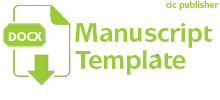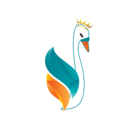Development and Validation of Microbiology and Parasitology Laboratory Manual for Science Education
Abstract
Purpose of the study: This study aimed to develop and validate a Microbiology and Parasitology Laboratory Manual specifically designed for Science Education students, in alignment with the Commission on Higher Education (CHED) Memorandum Order No. 75, series of 2017. The manual seeks to bridge theoretical knowledge with practical application through structured, inquiry-based laboratory activities that cultivate scientific skills, promote critical thinking, and reinforce adherence to laboratory safety protocols.
Methodology: The validation process was conducted in two phases. First, subject matter experts in microbiology, parasitology, and science education evaluated the manual based on content accuracy, instructional clarity, relevance, alignment with CHED competencies, and pedagogical soundness. Their feedback was systematically integrated to enhance the manual’s quality. Second, pilot testing was conducted with science education students to assess usability, engagement, and impact on learning outcomes. Data were collected through expert validation checklists, student perception surveys, and performance assessments during laboratory sessions.
Main Findings: Findings revealed that the manual was highly satisfactory across all validation criteria. Quantitative and qualitative results from pilot implementation demonstrated significant improvements in students’ comprehension of microbiological and parasitological concepts, laboratory competencies, and overall engagement.
Novelty/Originality of this study: This study offers a discipline-specific, standards-aligned laboratory manual developed for teacher preparation, filling a critical gap in localized instructional materials. It emphasizes not only scientific content but also the pedagogical approaches needed for future educators, contributing to quality enhancement in science teacher education.
References
Commission on Higher Education (CHED). (2017). CHED Memorandum Order No. 75, s. 2017: Policies, Standards and Guidelines for the Bachelor of Secondary Education Program.
CHED CMO 75 series of 2017. Accessed through https://www.docsity.com/en/docs/commission-in-higher-education-ched-cmo-no-75-s-2017/10704038/
O. Ozturk, “Pre-service teachers’ self-efficacy in implementing inclusive practices and resilience in Finland,” Teaching and Teacher Education, vol. 15, pp. 103398, 2021, doi: 10.1016/j.tate.2021.103398.
F. Abd-El-Khalick, “Nature of science in science education: Toward a coherent framework for synergistic research and development,” In Second international handbook of science education (pp. 1041-1060). Dordrecht: Springer Netherlands, 2011, doi: 10.1007/978-1-4020-9041-7_69
S. Wolf, “Me I don’t really discuss anything with them: Parent and teacher perceptions of early childhood education and parent-teacher relationships in Ghana,” International Journal of Educational Research, 99, 101525, 2020, doi: 10.1016/j.ijer.2019.101525.
Y. S. M. Tan, and S. M. Nashon, “Promoting teacher learning through learning study discourse: The case of science teachers in Singapore,” Journal of Science Teacher Education, vol. 24, no. 5, pp. 859-877, 2013, doi: 10.1080/09500693.2012.686459.
L. Franz, and G. Dawson, “Implementing early intervention for autism spectrum disorder: a global perspective,” Pediatric medicine (Hong Kong, China), vol. 2, pp. 44, 2019.
D. S. Domin, “Students’ perceptions of when conceptual development occurs during laboratory instruction,” Educational Research, vol. 8, pp. 140-152, 2007, doi: 10.1039/B6RP90027E.
P. D. Yadav, G. N. Sapkal, P. Abraham, R. Ella, G. Deshpande, D. Y. Patil, ... and V. K. Mohan, “Neutralization of variant under investigation B. 1.617. 1 with sera of BBV152 vaccinees,” Clinical Infectious Diseases, vol. 74, no. 2, pp. 366-368, 2021, doi: 10.1101/2021.04.23.441101.
P. A. Kirschner, J. Sweller, and R. E. Clark, “Why minimal guidance during instruction does not work: An analysis of the failure of constructivist, discovery, problem-based, experiential, and inquiry-based teaching,” Educational psychologist, vol. 41, no. 2, pp. 75-86, 2006, doi: 10.1207/s15326985ep4102_1.
F. Bognot, E. Goce, Z. Mergal, D. Muñoz, Laboratory manual in microbiology and parasitology for allied medical courses, Quezon City C & E Pubishing, Inc. 2015.
H. Torrance, “Formative assessment at the crossroads: Conformative, deformative and transformative assessment,” Oxford Review of Education, vol. 38, no. 3, pp. 323-342, 2012, doi: 10.1080/03054985.2012.689693.
D. Allen, and K. Tanner, “Infusing active learning into the large-enrollment biology class: seven strategies, from the simple to complex,” Cell biology education, vol. 4, no. 4, pp. 262-268, 2005, doi: 10.1187/cbe.05-08-0113.
P. Sheeran, A. Maki, E. Montanaro, A. Avishai-Yitshak, A. Bryan, W. M. Klein, ... and A. J. Rothman, “The impact of changing attitudes, norms, and self-efficacy on health-related intentions and behavior: A meta-analysis,” Health psychology, vol. 35, no 11, pp. 1178, 2016, doi: 10.1037/hea0000387.
C. Corpuz and S. Salandanan, Different Approaches and Methods, 2015.
Dela Cruz et al, “Gonyosoma oxycephalum (Red-tailed Green Ratsnake). Diet and Habitat use,” Herpetological Review, vol. 51, no. 1, pp. 144-145, 2020.
C. Rapanta, L. Botturi, P. Goodyear, L. Guàrdia, and M. Koole, “Online university teaching during and after the Covid-19 crisis: Refocusing teacher presence and learning activity,” Postdigital science and education, vol. 2, pp. 923-945, 2020, doi: 10.1007/s42438-020-00155-y.
G. Makransky, and G. B. Petersen, “The cognitive affective model of immersive learning (CAMIL): A theoretical research-based model of learning in immersive virtual reality,” Educational psychology review, vol. 33, no. 3, pp. 937-958, 2021, doi: 10.1007/s10648-020-09586-2.
J. Biggs, and C. Tang, Teaching for Quality Learning at University. Maidenhead, UK: Open University Press, 2011.
Ho, H. Roldan-Gan, Rosita, Verbo, Vivian. (2006). Microbiology and Parasitology : Laboratory Manual for the Health Science. Far Eastern University - Nicanor Reyes Medical Foundation Filipiniana (Allied Health & Medicine) Section, 2006.
J. Petersen, and S. K. McLaughlin, “Design and revision of an open-educational resource microbiology lab manual using student feedback,” Journal of microbiology & biology education, vol. 18, no. 2, pp. 1110-1128, 2017, doi: 10.1128/jmbe.v18i2.1302.
A. Wright, and E. E. Harding, “Development and evaluation of an electronic guide for introductory microbiology skills,” Microbiology Education, vol. 6, no. 1, pp. 28-35, 2005, doi: 10.1128/me.6.1.28-35.2005.
M. C. Gizzi and S. Rädiker, The Practice of Qualitative Data Analysis: Research Examples Using MAXQDA, 2021, doi: 10.36192/978-3-948768058.
S. Kurt, ADDIE Model: Instructional Design. Educational Technology, 2017.
A. Hofstein, and P. M. Kind, “Learning in and from science laboratories: Enhancing students’ meta-understanding of science,” Journal of Research in Science Teaching, vol. 49, no. 10, pp. 1232–1254, 2012, doi: 10.1002/tea.20424.
A. Abayomi, M. Michael, and N. Nwadioha, Laboratory Practical Manual for Medical Microbiology and Parasitology. Excellent Publisher, 2024.
D. Cheung, “The effects of a laboratory instructional package on the quality of science learning: A comparative study of university students’ learning,” Research in Science Education, vol. 41, no. 4, pp. 561–574, 2011, doi: 10.1007/s11165-010-9174-6.
A. Mutlu, and B. K. Temiz, “The effects of laboratory manual design and student cognitive levels on the development of scientific process skills,” Eurasian Journal of Educational Research, vol. 13, no. 51, pp. 239–256, 2013.
A. Hofstein, and V. N. Lunetta, “The laboratory in science education: Foundations for the twenty‐first century,” Science Education, vol. 88, no. 1, pp. 28–54, 2004, doi: 10.1002/sce.10106.
University of Toronto, Teaching Assistants' Training Program, 2024.
University of Toronto, Purpose of the University, 2018.
R. E. Mayer, Multimedia learning (2nd ed.), Cambridge University Press, 2009.
F. G. Deriba, M. Saqr, and M. Tukiainen, “Assessment of accessibility in virtual laboratories: a systematic review,” In Frontiers in Education (Vol. 9, p. 1351711). Frontiers Media SA, 2024, doi: 10.3389/feduc.2024.1351711.
A. Sypsas, and D. Kalles, “Virtual laboratories in biology, biotechnology and chemistry education: a literature review,” In Proceedings of the 22nd pan-Hellenic conference on informatics (pp. 70-75), 2018.
W. D. Sasongko, and I. Widiastuti, “Virtual lab for vocational education in Indonesia: a review of the literature” in AIP Conference Proceedings (AIP Publishing). doi: 10.1063/1.5139845
R. Elmoazen, M. Saqr, M. Khalil, and B. Wasson, “Learning analytics in virtual laboratories: a systematic literature review of empirical research,” Smart Learn. Environ, vol. 10, 1–20, 2023, doi: 10.1186/s40561-023-00244-y.
Wilfrid Laurier University, Aligning Assessment to Learning Outcomes, 2025.
University of New South Wales, Aligning Assessment with Outcomes, 2025.
A. I. Wahidah, A. Mardiana, S. A. Iriani, A. Safitri, A. F. Nihaya, and M. Nafiah, “The effectiveness of using the laboratory in learning science,” PEDAGOGIK: Jurnal Pendidikan, vol. 8, no. 2, pp. 418-440, 2021, doi: 10.33650/pjp.v8i2.2248.
W. Westlab, A Comprehensive Guide to Useful Lab Improvement Ideas, 2023.
J. Miller, “The impact of college science courses for non-science majors on adult science literacy,” a paper presented to a symposium titled “The Critical Role of College Science Courses for Non-Majors” at the annual meeting of the AAAS, 18 Feb. 2007, San Francisco, 2008.
P. Kumari, A. Mwesigye, and S. Balimuttajjo, “Science laboratory education and students' perceived behavior towards science education: A review,” Journal of Research Innovation and Implications in Education, vol. 8, no. 4, pp. 555-561, 2024.
A. O. Ugwoke, “Laboratory method: A key to effective science teaching in emerging technologies for achieving sustainable goals,” ESUT Journal of Education, vol. 6, no. 1, pp. 285-305, 2023.
I. Amanat, S. Kanwal, and N. Akhter, “Exploring the female students and teachers’ problems in conducting laboratory practicals,” Journal of Excellence in Social Sciences, vol. 3, no. 2, pp. 188-202, 2024.
Copyright (c) 2025 Kennedy A Beltran

This work is licensed under a Creative Commons Attribution 4.0 International License.
Authors who publish with this journal agree to the following terms:
- Authors retain copyright and acknowledge that the Integrated Science Education Journal is the first publisher licensed under a Creative Commons Attribution 4.0 International License.
- Authors are able to enter into separate, additional contractual arrangements for the non-exclusive distribution of the journal's published version of the work (e.g., post it to an institutional repository or publish it in a book), with an acknowledgment of its initial publication in this journal.
- Authors are permitted and encouraged to post their work online (e.g., in institutional repositories or on their website) prior to and during the submission process, as it can lead to productive exchanges and earlier and greater citation of published work.







.png)
.png)






